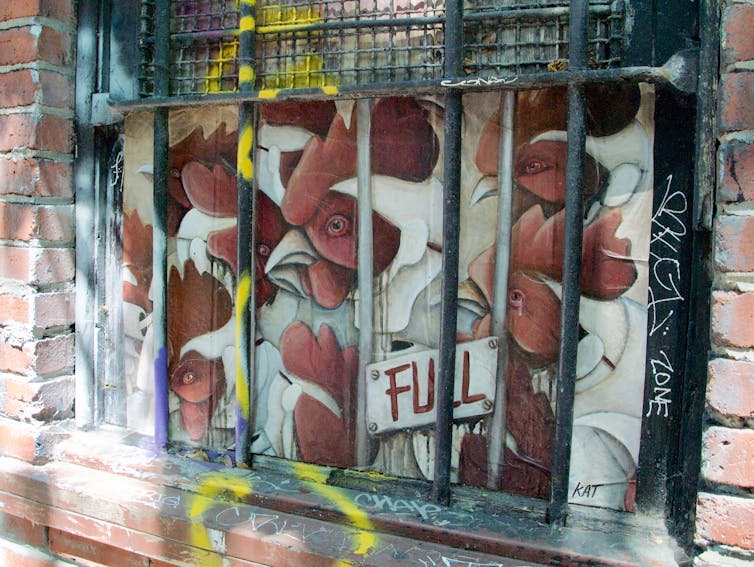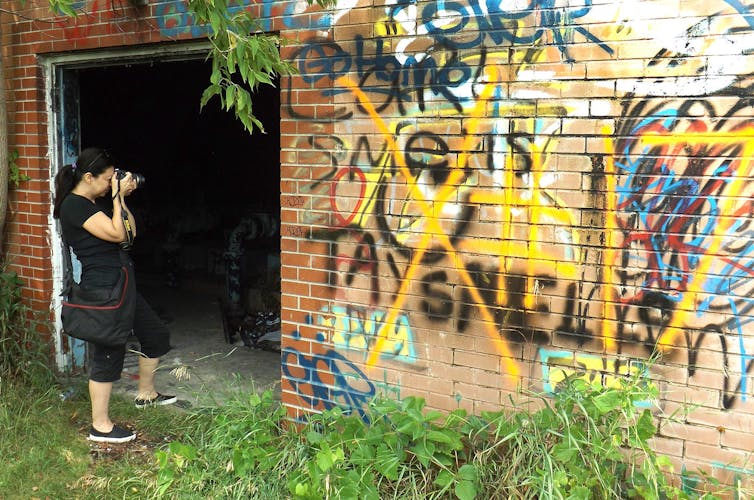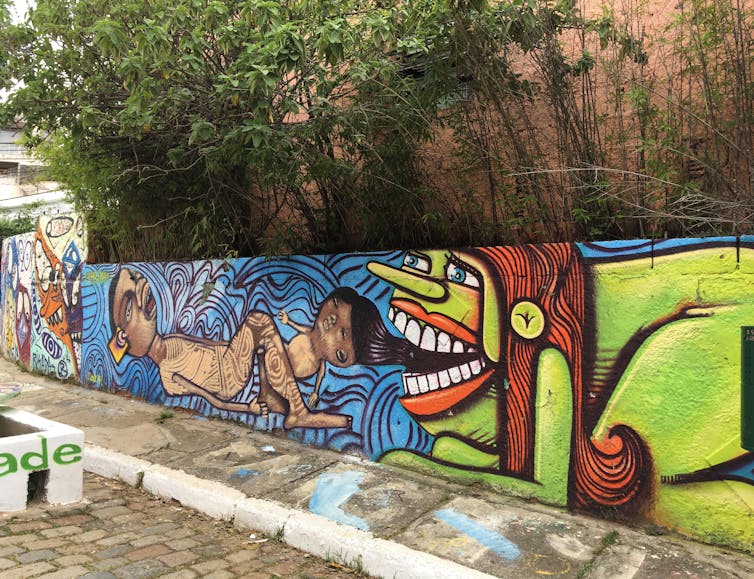This article, written by Anna Augusto Rodrigues, Trent University, originally appeared on The Conversation and is republished here with permission:
I stopped in my tracks, shocked by something I saw in a Montréal laneway window that had been boarded up in the city’s Plateau neighbourhood. I was looking at caged chickens, with no space to move, one with a tear on the side of its eye. The chickens were behind actual bars that were part of the window with the word “FULL.”
I was looking at street art. The message this piece was conveying about animal cruelty was loud, clear and unforgettable. Here was a very example of the type of art my research focuses on: pieces that promote public dialogue on social justice and can lead to opportunities for learning outside of formal schooling.

I call it “pop-up pedagogy” because the learning is not planned or structured, it just happens. The research I conducted for my dissertation looked at how street art creates potential spontaneous learning in public spaces, and how it can have a role fostering awareness and conversations within communities.
Low literacy, high impact
Looking at street art through an educational lens can be especially important in areas with populations with low literacy, as seen in a study conducted in São Paulo, Brazil.
The impacts of living with low literacy are far-reaching and can affect every aspect of a person’s life. This art form seems to foster discussion allowing those who are marginalized to have their voices heard. It also offers widespread messaging to reach people who may otherwise be excluded from mainstream literacy or media.
My awareness of the power of street art and imagery is something I came to through living with low literacy in my teens and early twenties. When I was 11, my parents moved back to Portugal, where they were from. I spoke solely English but was enrolled in a Portuguese-only school.

I struggled and I dropped out of school at age 16. I would visually “read” things all around me in order to make meaning without the need to read words. Eventually I made my way back to formal schooling. However, that struggle of not being able to communicate effectively, something which affects thousands of Canadians, stayed with me and developed into a passion to study street art through an educational lens.
Batman Alley can also be a classroom
Street art can complement formal classroom learning and teaching when it is part of experiential education that purposefully engages with students through intentional reflection on concrete experience to discern values and increase knowledge.
In spring of 2017, I travelled to São Paulo, Brazil to participate in co-teaching a field course on social justice to 20 Canadian students. We visited Beco do Batman (Batman Alley), an area known for its abundant street art. While there, two students and I began a conversation about a particular piece we found.

Were we looking at a commentary on the destruction of the natural world? Was it a conversation about Indigenous rights? Or could it be a creation story explaining the origins of the world?
The art didn’t have words to help decode its message but we debated its meaning by connecting it back to the issues we were exploring in the course — like environmental problems in the Amazon caused by a string of governments who were putting profit before people.
We didn’t come to an agreement but we furthered our understanding on some of the social justice themes we had been studying. As an instructor, I was able to model a process of lifelong learning that education researchers know can be critical for inviting learners into growth or empowerment.
It’s that thirst for knowledge and wider discussions that leads me to continue photographing street art and exploring how it can be part of widespread learning. With the nicer weather upon us, it’s time for me to grab my camera and wander the streets.![]()
- Anna Augusto Rodrigues, Contract Instructor, Child and Youth Studies, Trent University
This article is republished from The Conversation under a Creative Commons license. Read the original article.
